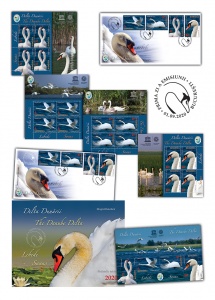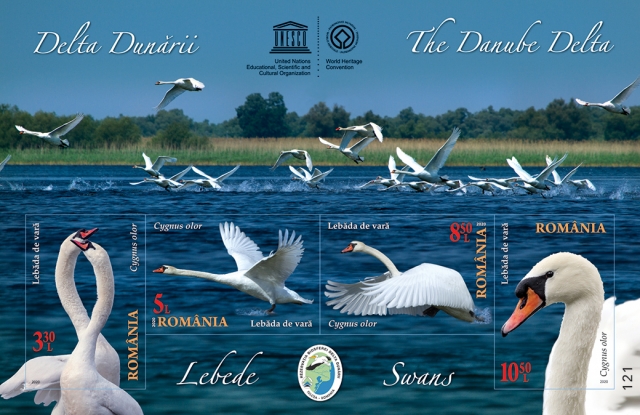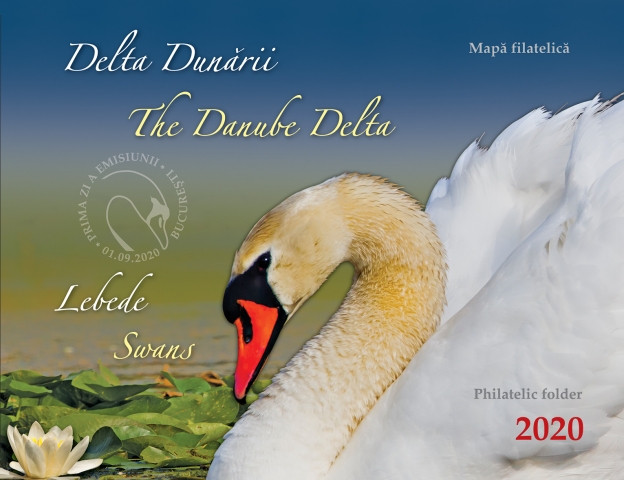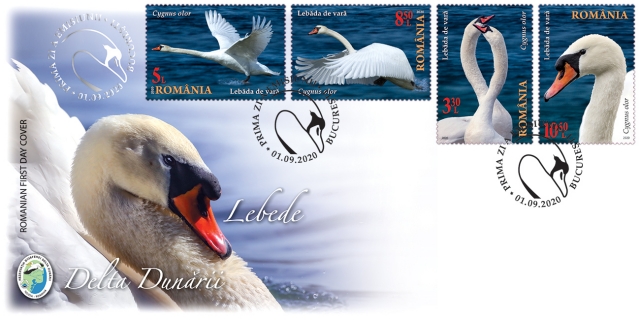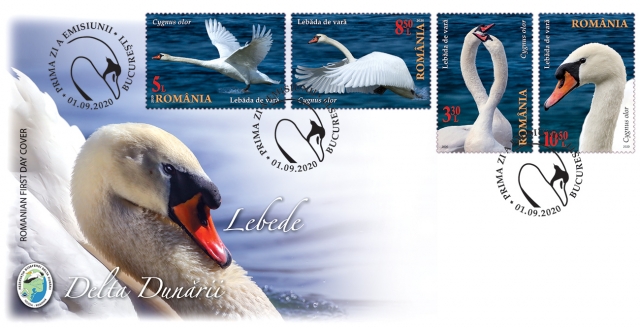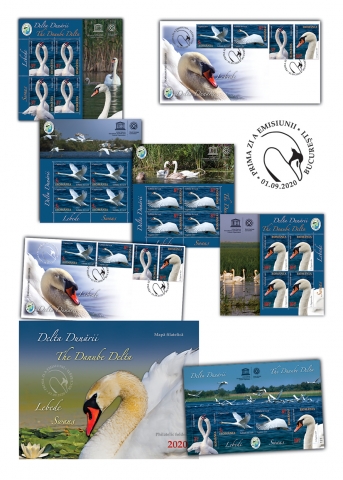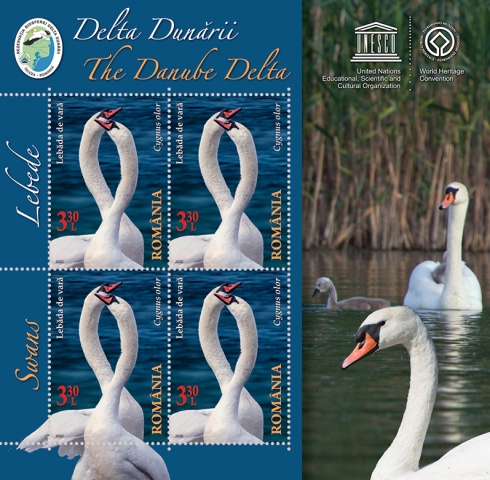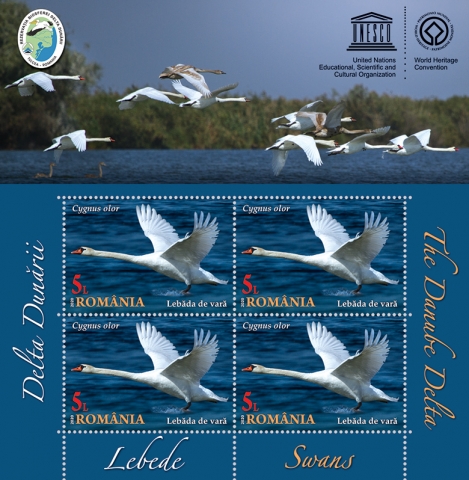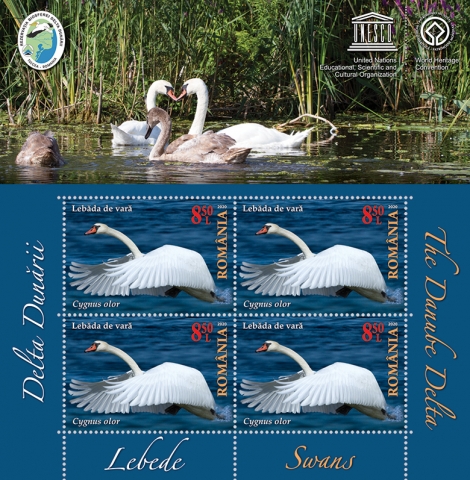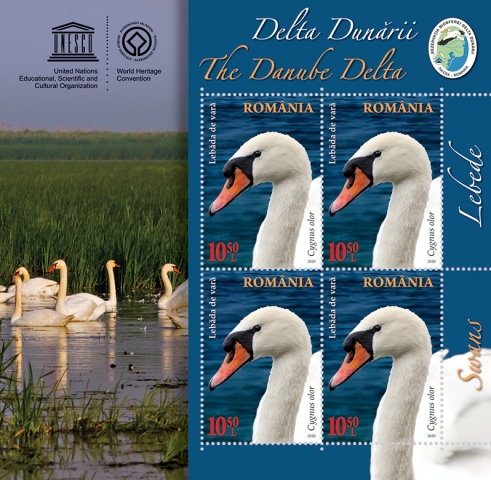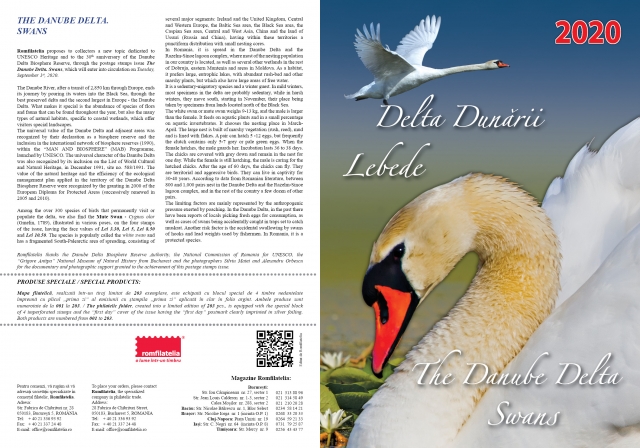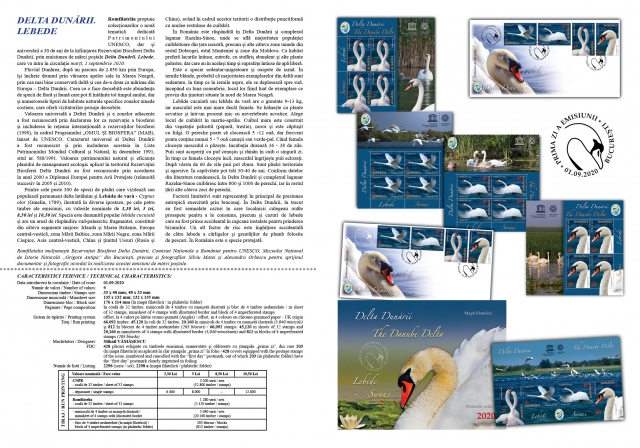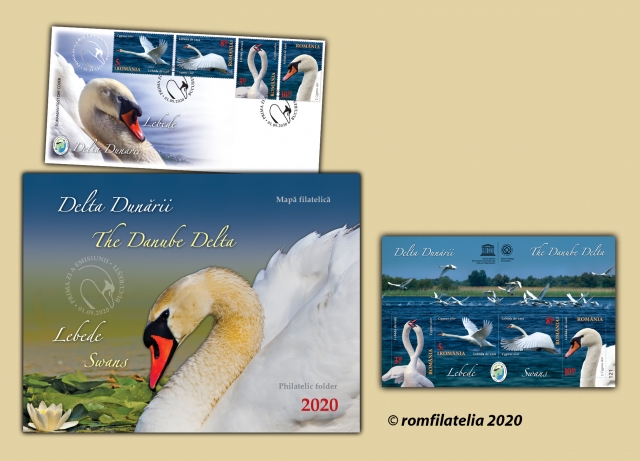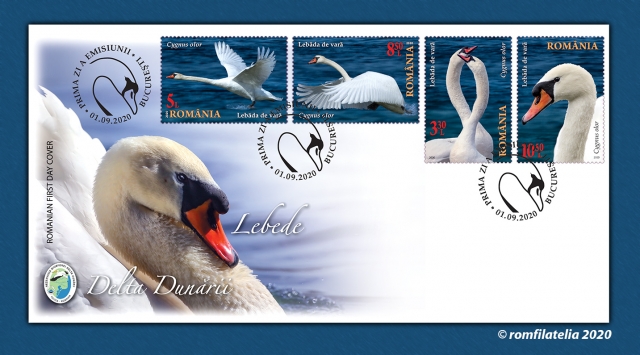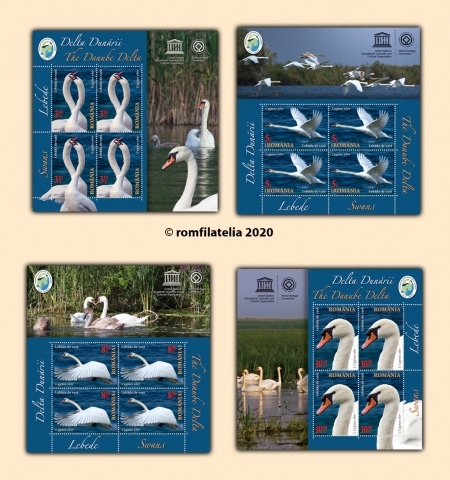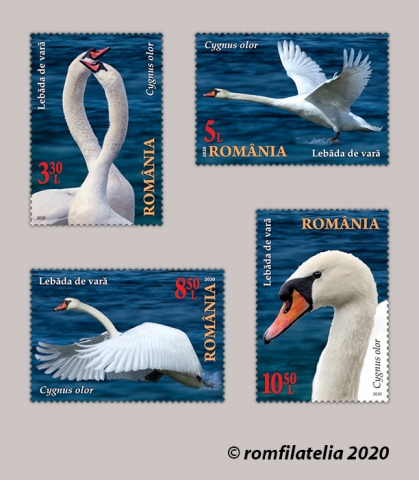Romfilatelia proposes to collectors a new topic dedicated to UNESCO Heritage and to the 30th anniversary of the Danube Delta Biosphere Reserve, through the postage stamps issue “The Danube Delta. Swans”, which will enter into circulation on Tuesday, September 1st, 2020.
The Danube River, after a transit of 2,850 km through Europe, ends its journey by pouring its waters into the Black Sea, through the best preserved delta and the second largest in Europe – the Danube Delta. What makes it special is the abundance of species of flora and fauna that can be found throughout the year, but also the many types of natural habitats, specific to coastal wetlands, which offer visitors special landscapes.
The universal value of the Danube Delta and adjacent areas was recognized by their declaration as a biosphere reserve and the inclusion in the international network of biosphere reserves (1990), within the “MAN AND BIOSPHERE” (MAB) Programme, launched by UNESCO. The universal character of the Danube Delta was also recognized by its inclusion on the List of World Cultural and Natural Heritage, in December 1991, site no. 588/1991. The value of the natural heritage and the efficiency of the ecological management plan applied in the territory of the Danube Delta Biosphere Reserve were recognized by the granting in 2000 of the European Diploma for Protected Areas (successively renewed in 2005 and 2010).
Among the over 300 species of birds that permanently visit or populate the delta, we also find the Mute Swan – Cygnus olor (Gmelin, 1789), illustrated in various poses, on the four stamps of the issue, having the face values of Lei 3.30, Lei 5, Lei 8.50 and Lei 10.50. The species is popularly called the white swan and has a fragmented South-Palearctic area of spreading, consisting of several major segments: Ireland and the United Kingdom, Central and Western Europe, the Baltic Sea area, the Black Sea area, the Caspian Sea area, Central and West Asia, China and the land of Ussuri (Russia and China), having within these territories a punctiform distribution with small nesting cores.
In Romania, it is spread in the Danube Delta and the Razelm-Sinoe lagoon complex, where most of the nesting population in our country is located, as well as several other wetlands in the rest of Dobruja, eastern Muntenia and areas in Moldova. As a habitat, it prefers large, eutrophic lakes, with abundant rush-bed and other marshy plants, but which also have large areas of free water.
It is a sedentary-migratory species and a winter guest. In mild winters, most specimens in the delta are probably sedentary, while in harsh winters, they move south, starting in November, their place being taken by specimens from lands located north of the Black Sea.
The white swan or mute swan weighs 9-13 kg, and the male is larger than the female. It feeds on aquatic plants and in a small percentage on aquatic invertebrates. It chooses the nesting place in March-April. The large nest is built of marshy vegetation (rush, reed), mud and is lined with flakes. A pair can hatch 5 -12 eggs, but frequently the clutch contains only 5-7 grey or pale green eggs. When the female hatches, the male guards her. Incubation lasts 36 to 38 days. The chicks are covered with grey down and remain in the nest for one day. While the female is still hatching, the male is caring for the hatched chicks. After the age of 60 days, the chicks can fly. They are territorial and aggressive birds. They can live in captivity for 30-40 years. According to data from Romanian literature, between 800 and 1,000 pairs nest in the Danube Delta and the Razelm-Sinoe lagoon complex, and in the rest of the country a few dozen of other pairs.
The limiting factors are mainly represented by the anthropogenic pressure exerted by poaching. In the Danube Delta, in the past there have been reports of locals picking fresh eggs for consumption, as well as cases of swans being accidentally caught in traps set to catch muskrat. Another risk factor is the accidental swallowing by swans of hooks and lead weights used by fishermen. In Romania, it is a protected species.
Romfilatelia thanks the Danube Delta Biosphere Reserve Authority, the National Commission of Romania for UNESCO, the “Grigore Antipa” National Museum of Natural History from Bucharest and the photographers Silviu Matei and Alexandru Orbescu for the documentary and photographic support granted to the achievement of this postage stamps issue.
The philatelic folder, created into a limited edition of 203 pcs., is equipped with the special block of 4 imperforated stamps and the “first day” cover of the issue having the “first day” postmark clearly imprinted in silver foiling. Both products are numbered from 001 to 203.
The postage stamps issue “The Danube Delta. Swans” will be available on Tuesday, September 1st 2020, in Romfilatelia’s shops network in Bucharest, Bacau, Brasov, Cluj-Napoca, Iasi and Timisoara and online on https://romfilatelia.ro/store/. The postage stamps issue is completed by the First Day Cover, in sheet of 32 stamps, minisheet of 4 stamps with illustrated border and block of 4 imperforated stamps.



